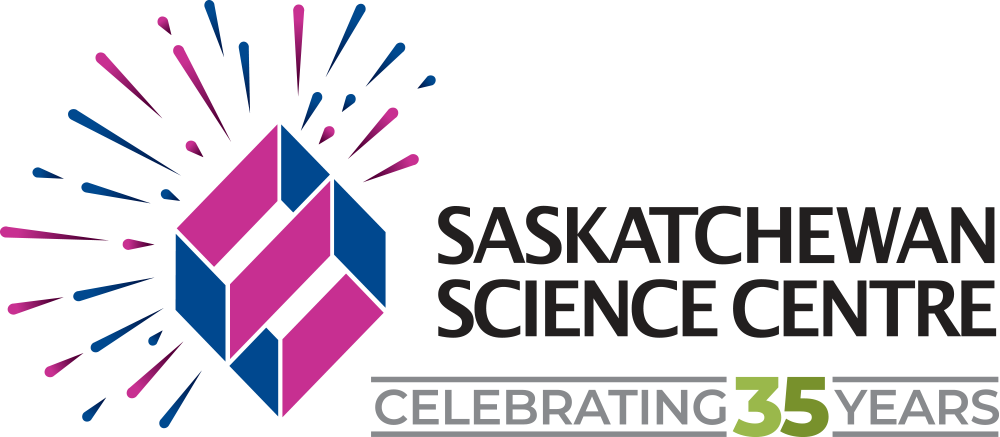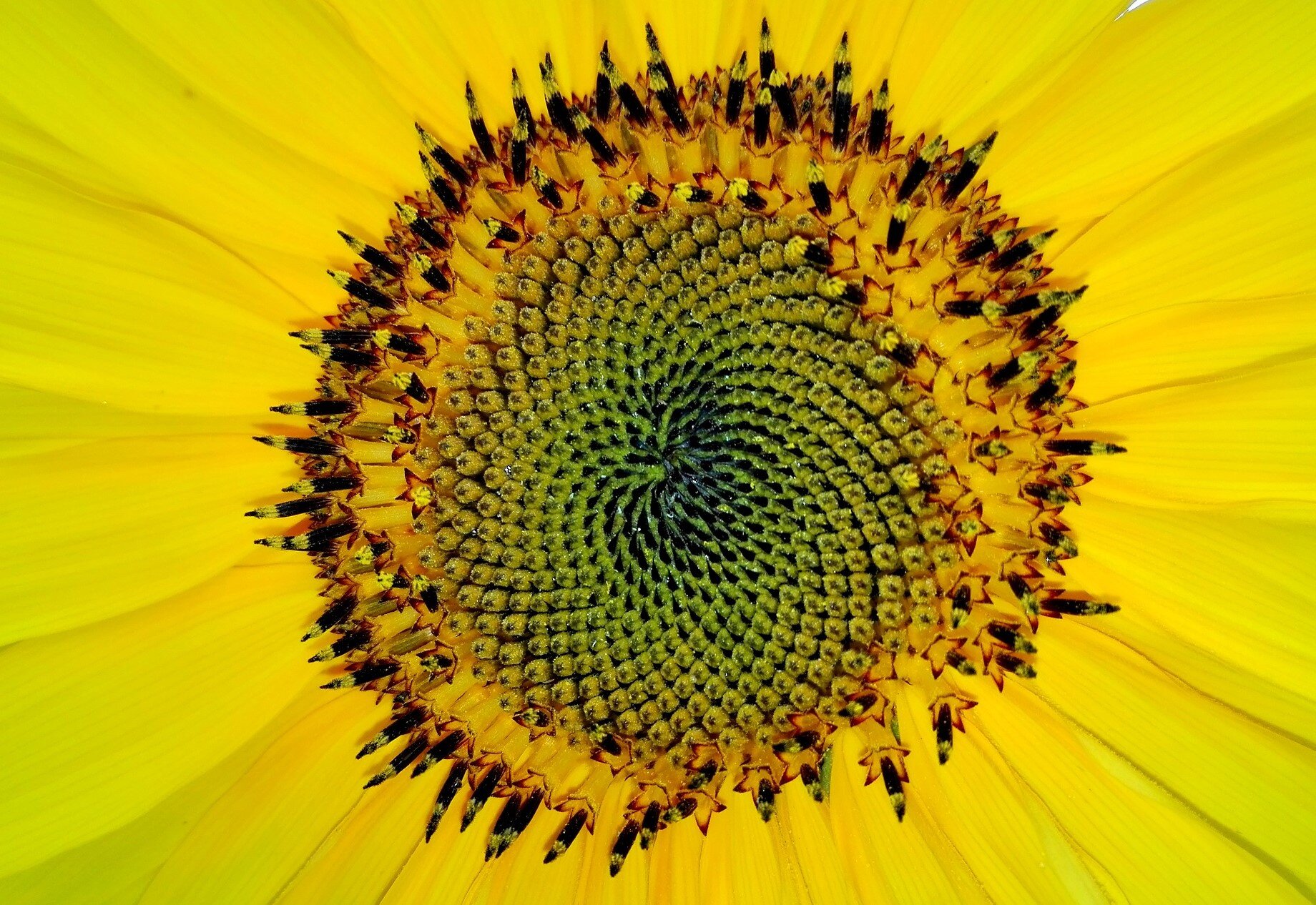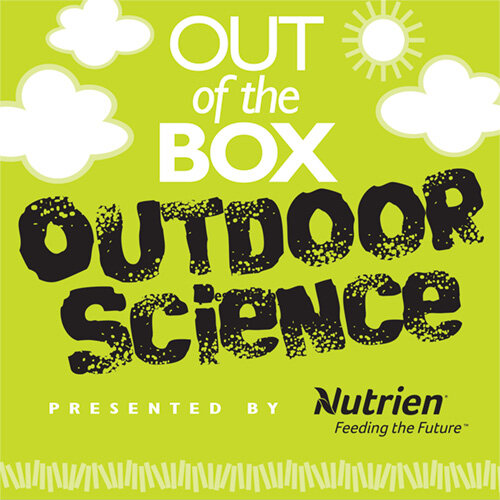
The Saskatchewan Science Centre Online! Check out our hilarious and educational web series “SSCTV”, find downloadable resources, explore other cool science links, and tune into the live BUBOCam!
Patterns in Nature
Have you ever noticed that there are patterns in many natural organisms? What could be their purpose? How do they help nature?
Explore Patterns in Nature
Many shapes in nature follow a special spiral pattern, and this pattern has been known as the golden ratio, which was first discussed by ancient mathematicians and philosophers. We can see this pattern in spiral of seashells, seeds in the head of a sunflower, pine cones, aloe, pineapples, cacti, snowflakes, and even in the double helix of DNA.
This pattern is expressed as Fibonacci numbers, named after the Italian mathematician Leonardo of Pisa (also known as Fibonacci), who introduced this pattern to European mathematicians. Previously this pattern was discussed much earlier by several Indian mathematicians.
Fibonacci numbers are a sequence in which the third number is the sum of the two preceding numbers: 0, 1, 1, 2, 3, 5, 8, 13, 21, 34, 55, 89, 144, into infinity. The ratio of two consecutive Fibonacci numbers is the golden ratio. In mathematical form, we can write this as: (a+b)/a =ɸ. Where ɸ (called phi) is an irrational number that starts out as 1.6180339887... ∞.
Why does nature have this specific pattern?
There is no definitive answer to this question. Scientists have pointed out many benefits of this pattern, which could be a reason that these patterns are preferred by nature. One key feature of this pattern is that a structure can grow in size without affecting the stability of the structure. So, the nature uses this pattern for stable growth of a structure.
On many types of trees, the leaves are aligned in this specific spiral pattern. The scientists speculate that for plants the spiral arrangement of leaves maximizes the sunlight exposure, which is critical for the plant’s growth. You can read more about it here: https://core.ac.uk/download/pdf/58824887.pdf
Are there other special patterns in nature?
Once you start looking at nature with the intent of finding a pattern, you can find patterns everywhere. Fractal is another repeating pattern that is mostly found in nature. A fractal is a never-ending geometric pattern. In a fractal, a pattern is repeated in the same way, appearing as smaller and smaller versions.
We’ve got an in-depth article to help you observe fractals in leaves around you and create your own fractals. Check it out at this link: https://www.sasksciencecentre.com/real-science-real-fun/fractals-math-is-written-in-the-leaves.
Want to take your outdoor exploration adventures to the next level?
We’ve got a special kit for that!
The Out of the Box Outdoor Science kit is packed with fun experiments and activities for kids to explore science in the outdoors!
Kids will get to explore leaves, campfires, bugs, animal poop, tornadoes, microorganisms, sunshine, and stars. Yes, we’ve packed all of these fun activities in a little portable box for kids to take along wherever they plan to hang out this summer - campsites, parks, or even their own backyards.
Loving this content? Make a donation to the Saskatchewan Science Centre!
#letssciencethis #SaskScienceCentre #AtHomeWithCASC #ScienceChampions #ScienceAtHome #realsciencerealfun
The Largest Organism on Earth
Do you know what’s the largest organism on Earth?
The Largest Organism on Earth
A grove of 47,000 Aspens originating from a single male parent Aspen is the largest organism on Earth. This grove covers 106 acres in Richfield, Utah, USA. The estimated total weight of wood in this organism is approximately 6,000 tonnes.
How Did This Grove Get So Large?
The single male aspen has been genetically cloning itself for thousands of years to make this huge grove, which is named Pando (Latin for ‘I spread’).
But not all Aspens are clones as they do reproduce through pollination when they can. So how can we tell if a particular stand of aspens is a clone or not?
The only sure way to tell is through genetic testing, but if all the leaves in the stand emerge at the same time in spring and turn the same colour simultaneously in the fall, then the trees just might be clone.
Special Aspens in Canada
Aspens are native to Canada and we can find one very special aspen grove right here in Saskatchewan.
Crooked Bush (also known as Twisted Trees) near Hafford, Saskatchewan is a small grove of Aspen trees that have developed a genetic mutation that makes them grow in a twisted shape.
Next time you spot Aspen trees, try to guess if they are clones or not! But, before you go on looking for cloned Aspens, make sure that they are Aspens and not Birch trees.
How To Tell Aspen and Birch Trees Apart?
Aspen and Birch trees both have straight whitish stems which makes it difficult to tell them apart. The easiest way to tell both trees apart is by looking closely at their leaves. The Aspen leaves are rounder compared to the Birch leaves and have relatively less sharp edges.
Aspen Leaves
Birch Leaves
If you know any other cool facts about Aspens, share them with us in the comment section below.
Interested in exploring nature?
Into Nature’s Wild is a non-stop ride via kayak, bike, train, hot air balloon, zipline, kiteboard, hiking boots and more. An IMAX film that visits some of the most beautiful but untamed landscapes of the great outdoors, from the lush coastline of Oregon and the wilds of Alaska to the ancient canyons of the Southwest and the rolling hills of the Appalachian Trail.
Loving this content? Make a donation to the Saskatchewan Science Centre!
#letssciencethis #SaskScienceCentre #AtHomeWithCASC #ScienceChampions #ScienceAtHome #realsciencerealfun
Elements R Us With Tommy Tungsten - Nickel
Got some change in your pocket? You’ll love this super special item from Tommy Tungsten at Elements ‘R’ Us!
Come on down to Elements 'R’ Us today and get some Nickel!
Got some change in your pocket? You’ll love this super special item from Tommy Tungsten at Elements ‘R’ Us. Come on down to Elements 'R’ Us today and get some Nickel!
Did you find this helpful? Consider making a donation to the Saskatchewan Science Centre!
SSC Interviews - Astronaut John B. Herrington
Ryan from the Saskatchewan Science Centre talks to retired astronaut John Herrington about his experience filming Into Nature's Wild, the newest film playing at the Kramer IMAX Theatre! They also explore John's journey to becoming an astronaut, what it's like to hang off the side of the International Space Station, and the importance of exploring nature and protecting the planet.
Did you find this interesting? Consider making a donation to the Saskatchewan Science Centre!
Elements R Us With Tommy Tungsten - Lead
Tommy's got you covered with a sweet deal on Lead. Come on down to Elements 'R Us today!
Lead might be toxic when ingested, but we can put it to good use. Tommy's got you covered with a sweet deal on Lead. Come on down to Elements 'R Us today!
Did you find this helpful? Consider making a donation to the Saskatchewan Science Centre!








